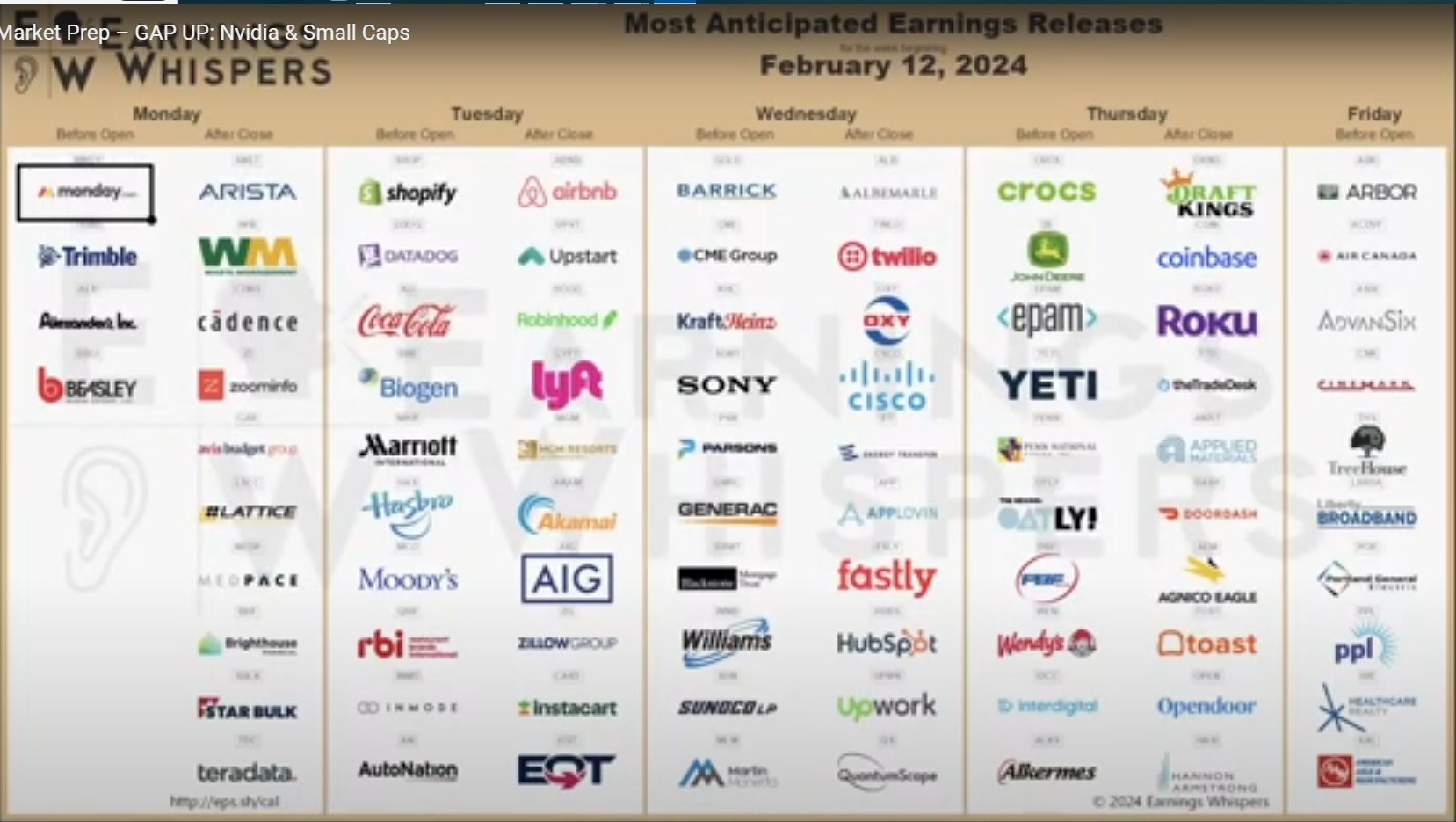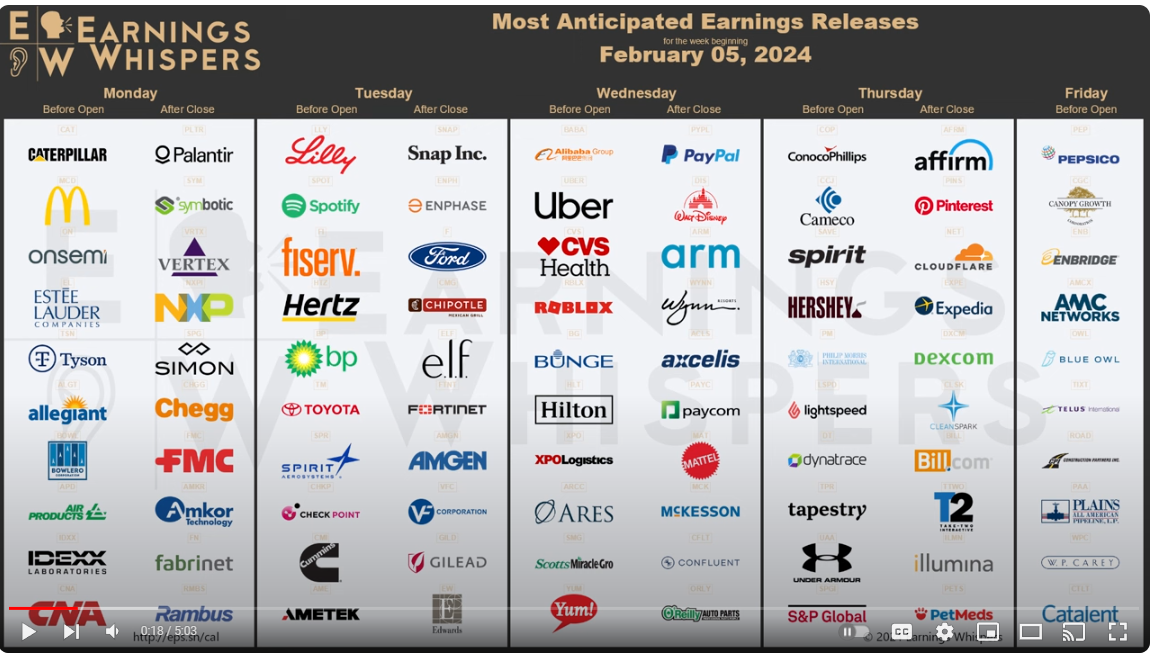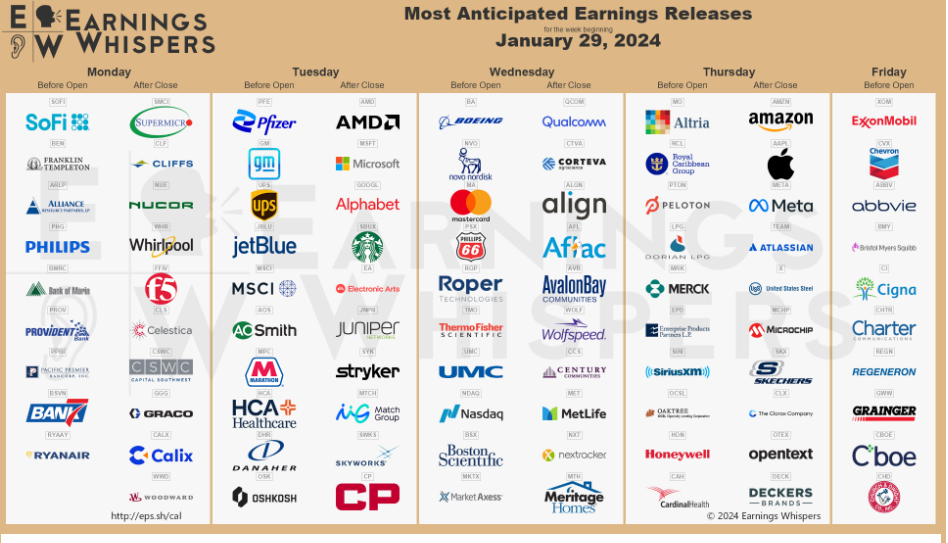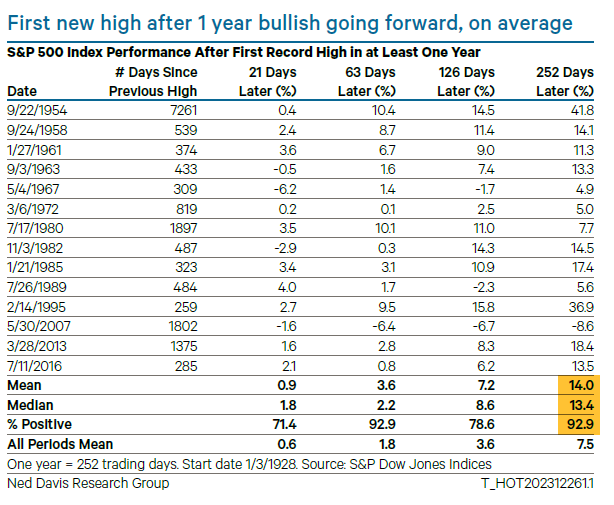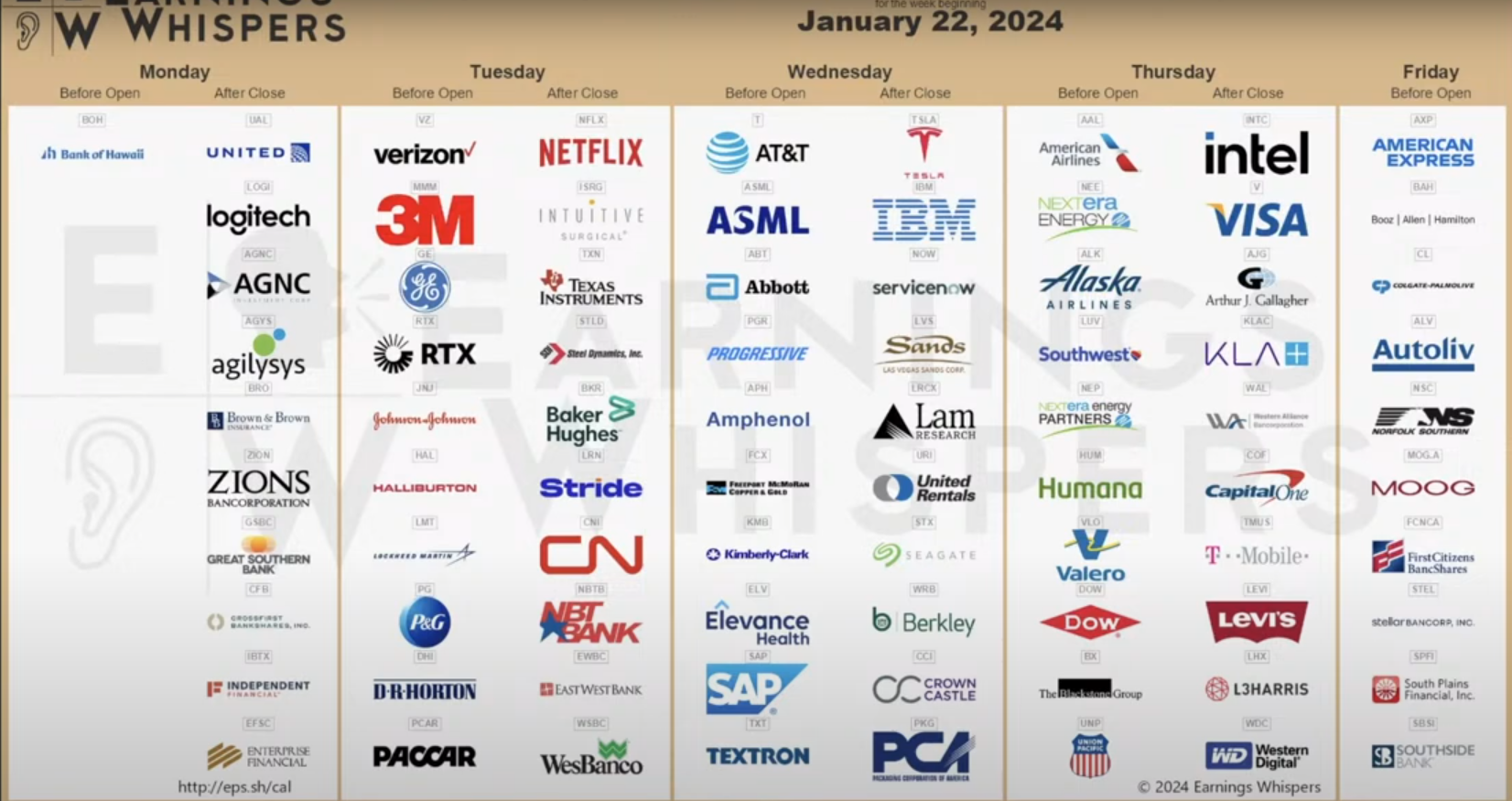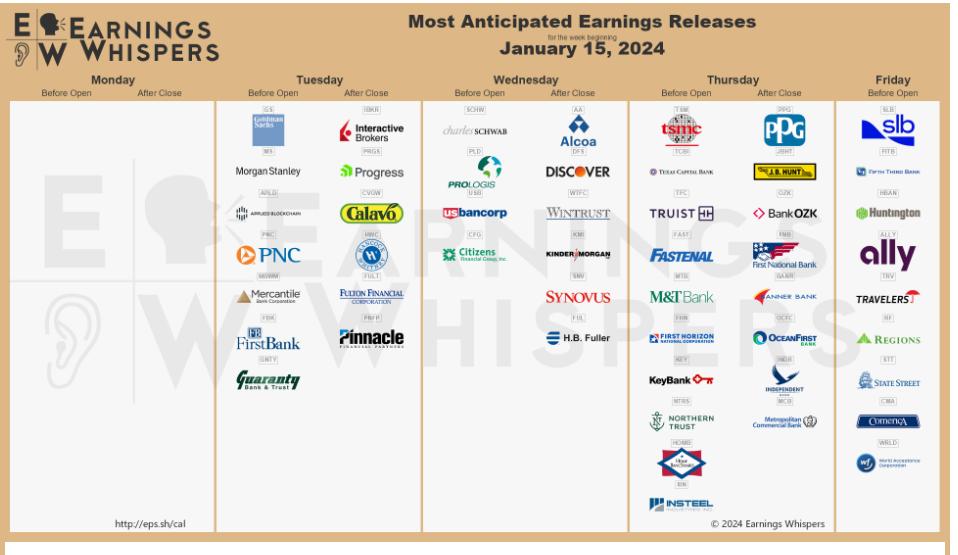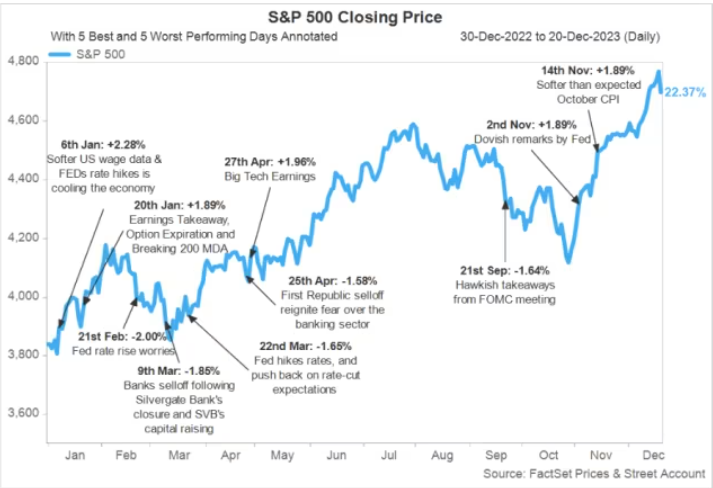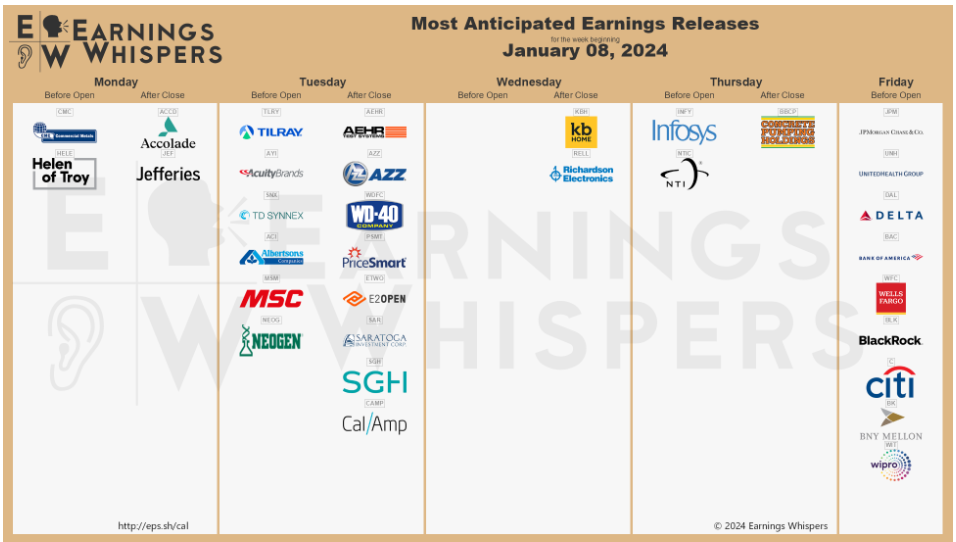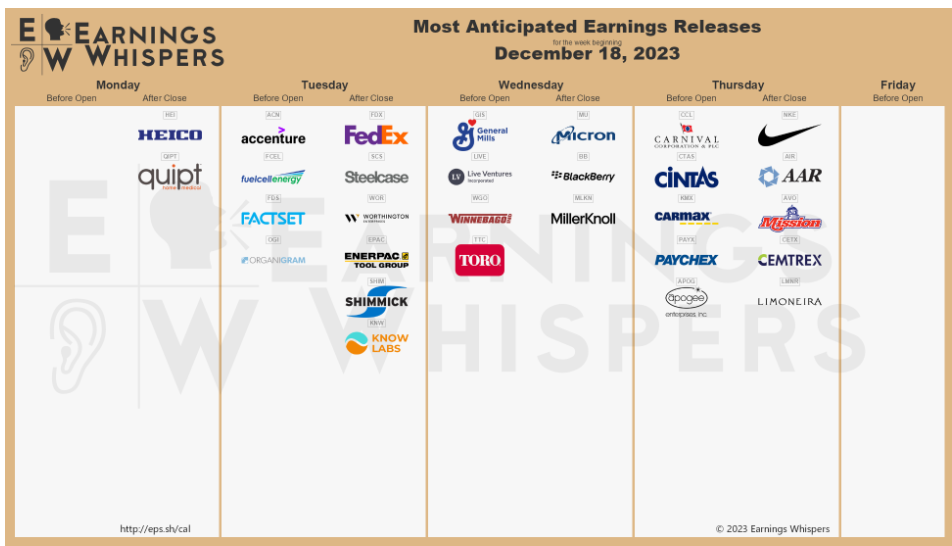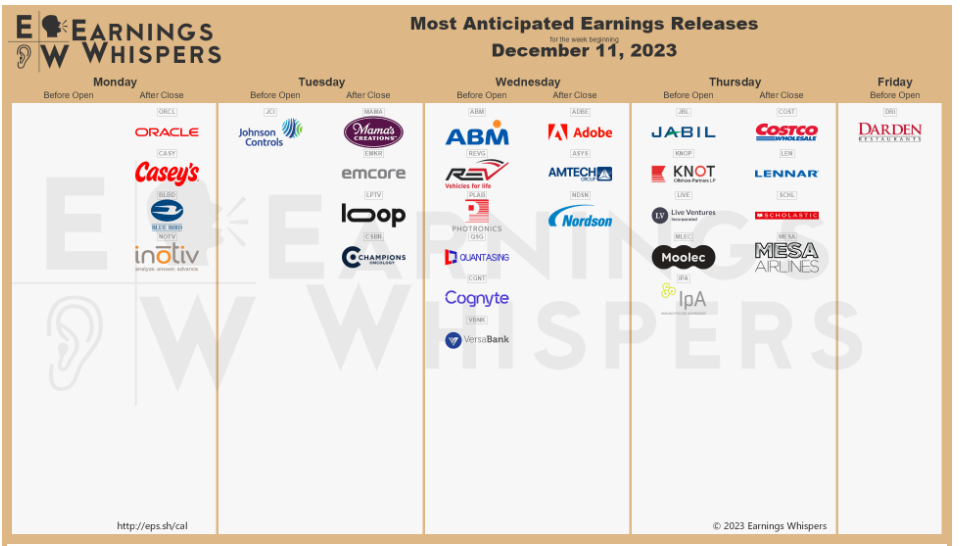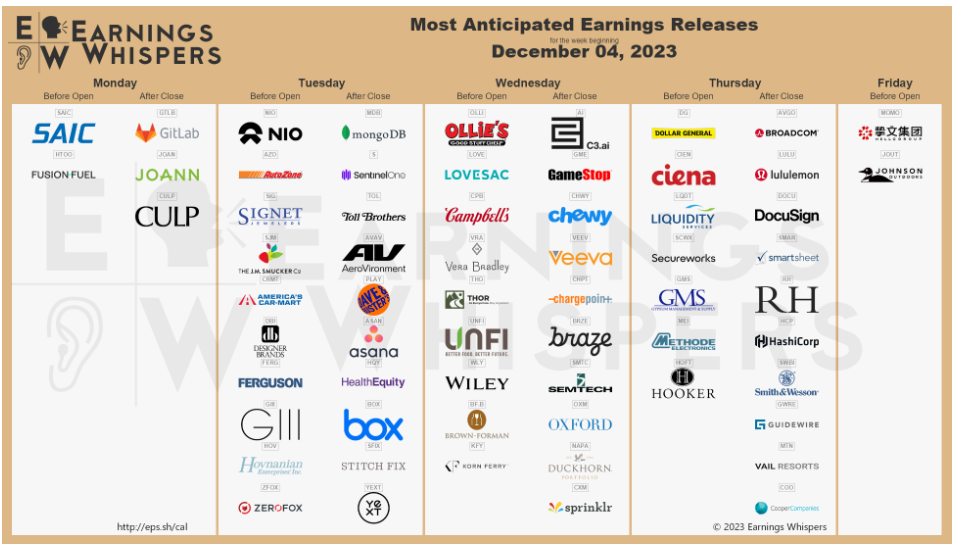Week of Feb 9, 2024 Weekly Recap & The Week Ahead
February 13th, 2024“Trading is very competitive and you have to be able to handle getting your butt kicked.” — unknown
1. Biden Administration Explores Raising Tariffs on Chinese EVs — Biden administration officials, long divided over trade policy, have left in place Trump-era tariffs on roughly $300 billion of Chinese goods. But officials at the White House and other agencies are debating the levies again, the people said, with an eye on wrapping up a long-running review of the tariffs early next year. Chinese EVs are already subject to a 25% tariff, which has helped prevent subsidized Chinese automakers from making inroads into the U.S. market. Raising that tariff, which comes on top of a 2.5% tariff on auto imports, likely would have little immediate impact on U.S. consumers. Other targets for potential tariff-rate increases are Chinese solar products and EV battery packs, the people said. While the U.S. now primarily imports solar material from Southeast Asian countries, China is still an important supplier of EV batteries.
2. In China, Deflation Tightens Its Grip — the latest data suggest China faces a growing risk of slipping into a longer-term spell of falling prices that becomes harder to reverse the longer it lasts. That presents a special challenge for the rest of the world. While cheaper goods from China might help ease inflation elsewhere, it means the global economy can also expect a flood of cut-price imports as Chinese factories search out buyers overseas for products they can’t sell at home. That risks squeezing other countries’ domestic manufacturing, stoking already acute tensions over trade between China and the U.S.-led West. China’s sinking prices add to a litany of economic challenges in the country this year. Growth is projected to slow from last year’s underwhelming pace. A drawn-out real-estate crunch is throttling consumer spending, with China Evergrande Group—the poster child for the sector’s woes—ordered into liquidation by a Hong Kong court. Exports are struggling and foreign investors are fleeing. Beijing on Wednesday replaced the country’s top securities regulator after an epic stock-market rout.
3. S&P 500 Tops 5,000 — the S&P 500 closed at a record level on Friday, finishing above 5,000 for the first time ever as investors looked to next week’s inflation data for a confirmation of easing price pressures. So far this year, investors have largely focused on the positive signs for markets: Economic data, including the latest readings on labor and gross domestic product, have boosted hopes that the Federal Reserve monetary policy actions won’t hamper growth. Recent earnings results from Palantir Technologies and IBM have also lifted hype about artificial intelligence. These themes have carried the S&P 500 upwards in 14 out of the past 15 weeks–something which hasn’t happened since 1972.
The week ahead — Economic data from Econoday.com:
